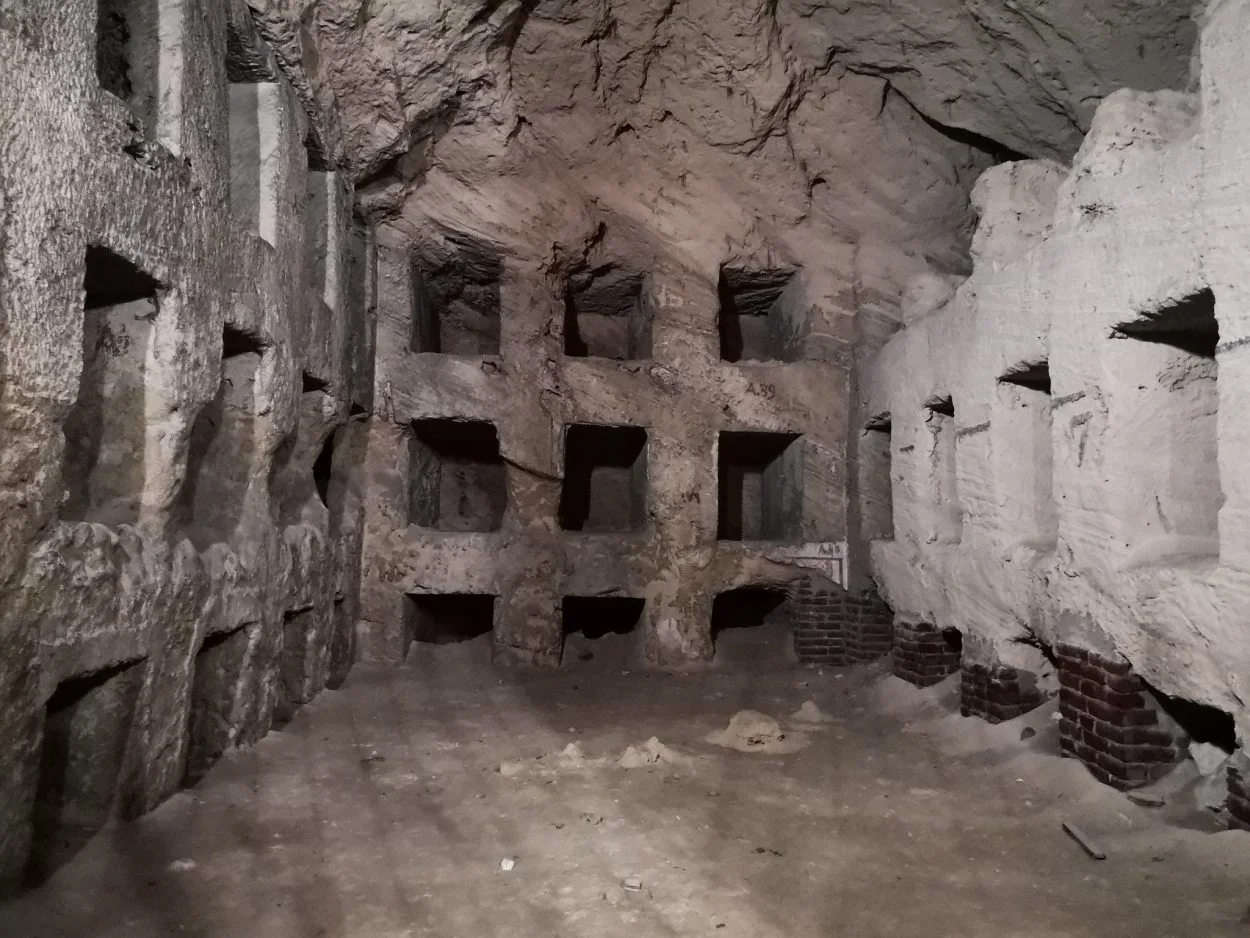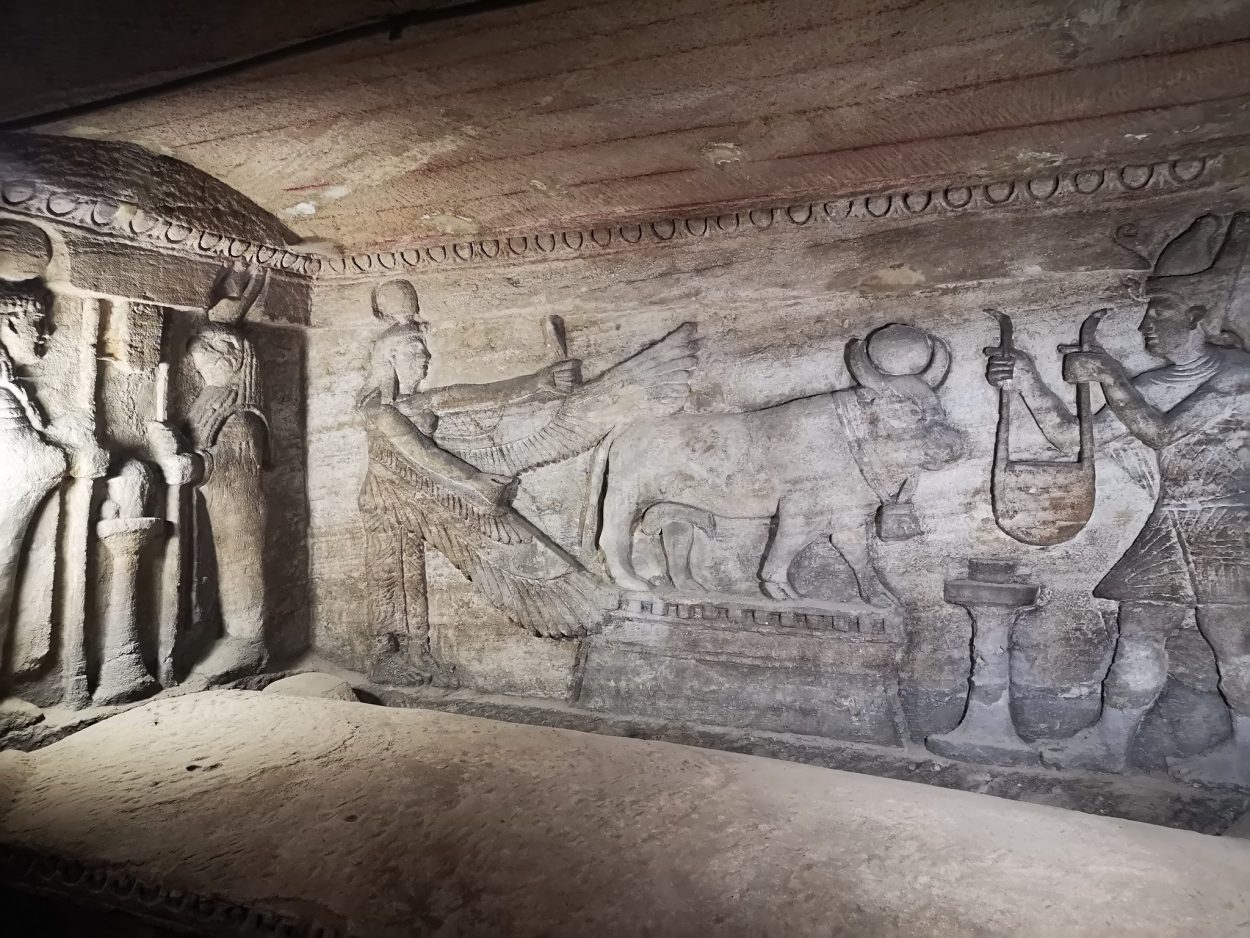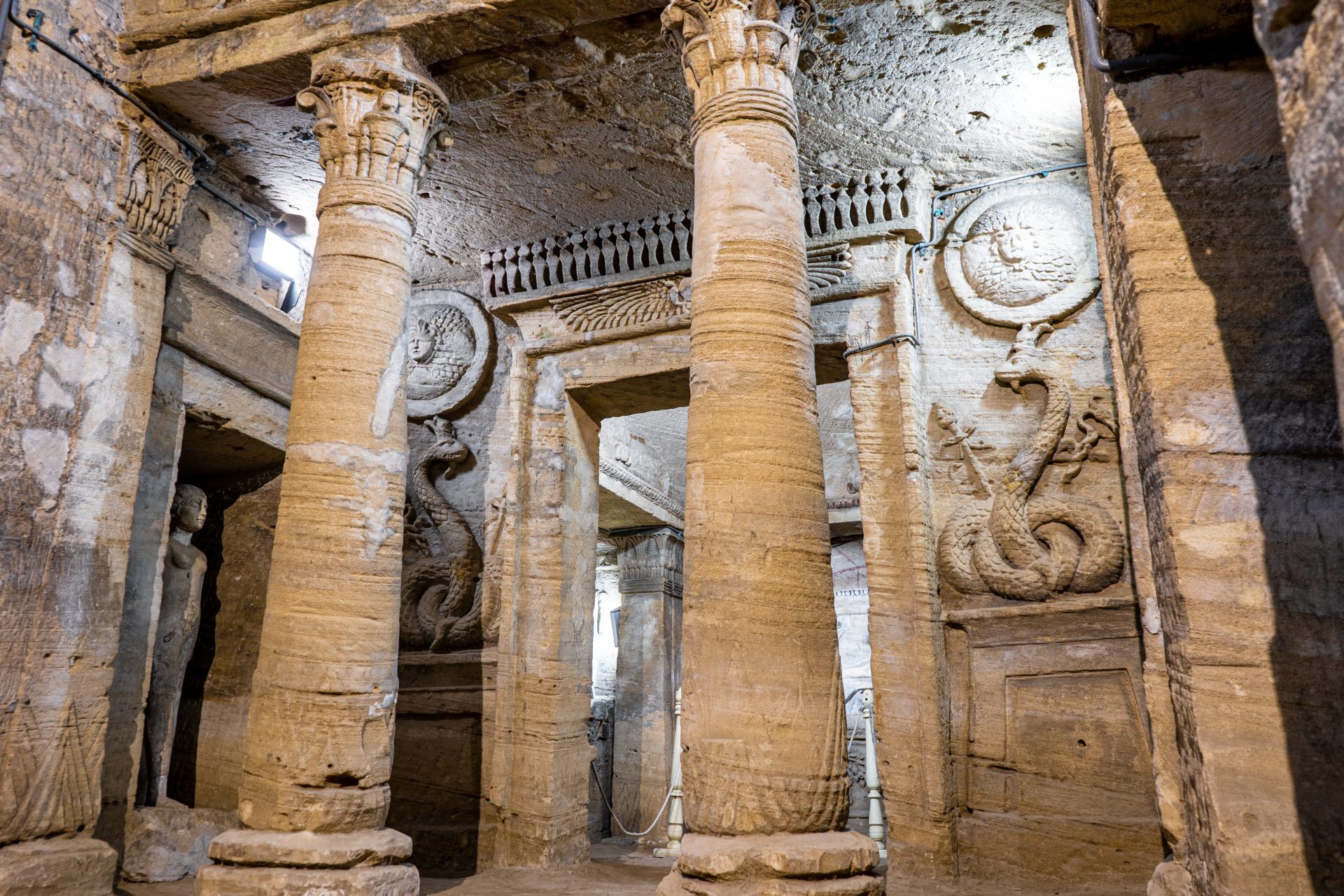The catacombs of Kom El Shoqafa, meaning the “Mound of Shards” or “Potshards” is a subterranean necropolis beneath the streets of modern-day Alexandria in Egypt.
Alexandria is located in the eastern part of the Mediterranean Basin in Northern Egypt and was founded in the vicinity of an Egyptian settlement named Rhacotis (that became the Egyptian quarter of the city) by Alexander the Great in 331 BC after he captured the Egyptian Satrapy from the Persians.
The city was famous for the Pharos Lighthouse of Alexandria (one of the Seven Wonders of the Ancient World) and the Great Library. Alexandria was the intellectual and cultural centre of the ancient Mediterranean for much of the Hellenistic age and throughout the Roman period.
Kom El Shoqafa is likely named for the quantities of terracotta jars, plates and objects deposited in the vicinity by people visiting the tombs during antiquity. Visitors would often bring food and wine, purposely breaking the containers and discarding them outside the catacomb’s entrance.

Kom El Shoqafa was first built during the 2nd century AD during the age of the Antonine emperors a short distance from the ancient acropolis, serving as a place of burial associated with the Pharaonic funerary cult. Over time, the necropolis developed into a labyrinth of tunnels and chambers over multiple floors, accessed via a spiral staircase and divided into the Hypogeum 1 and Hypogeum 2.
The catacombs are a rare fusion of Hellenistic, Egyptian and early Imperial Roman architecture featuring dozens of chambers adorned with sculpted pillars, statues, and other syncretic Romano-Egyptian religious symbols, burial niches, sarcophagi, as well as a large Roman-style banquet room where memorial meals were conducted by relatives of the deceased.

The dead would have been lowered by a vertical shaft in the staircase using ropes that leads off to a rotunda with a central well. The rotunda connects to the triclinium, the Hall of Caracalla in which the bones of horses and humans were found, and the principal tomb chamber which has a temple-like façade consisting of two columns topped by papyrus, lotus, acanthus leaves and an architrave with a relief of a central winged sun-disk flanked by Horus falcons.
Kom El Shoqafa was used by the inhabitants of Alexandria for over three centuries, where additional chambers were carved into the bedrock creating a hive network that could accommodate around 300 corpses.
Header Image Credit : Justina Atlasito





